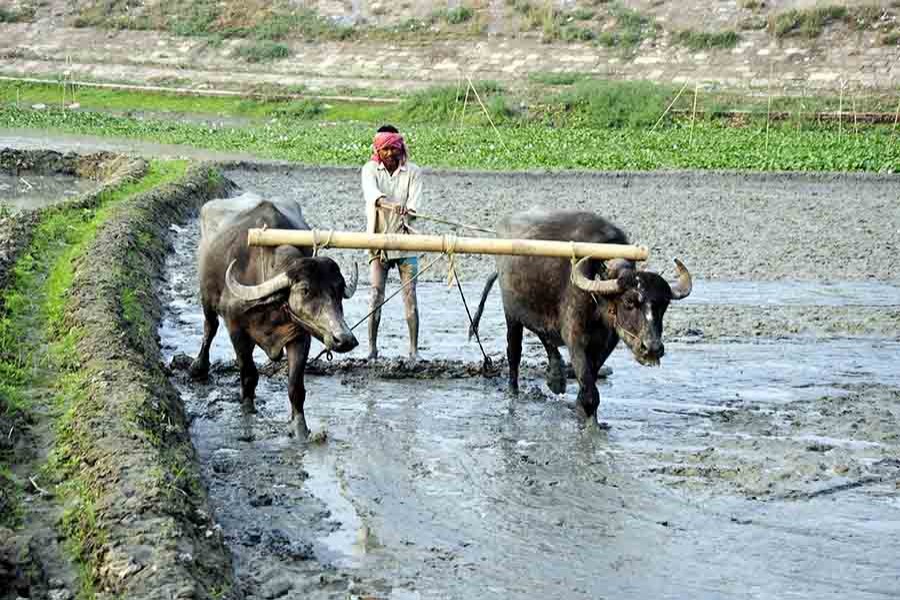
Published :
Updated :

It is observed that 2-3 out of 100 households in rural areas of Bangladesh are, directly or indirectly, associated with political parties. But when disaggregated, roughly one-thirds of the richer segments of households are found to have access to any political party compared with 6-7 per cent for the poor households. If access to political parties is assumed to contribute to capital accumulation, needless to mention, the rural rich are much ahead of the rural poor. It, thus, appears that disparity of this kind of access also contributes to disparity in other branches of livelihood strategy.
About 40 per cent of rural households are reported to have access to non-governmental organisations (NGOs). But the average hides the disaggregated dynamics. Especially, very poor households (owning land up to 0.40 ha) could significantly increase their participation during the past few decades; roughly four-fifths of poor households now have embraced the umbrella of NGOs that provide access to credit and other services. This might have played a role for the accumulation of other assets like rickshaw vans, livestock or pumps. Thus, access to financial institutions influence livelihoods by enabling the accumulation of other assets.
But it should also be borne in mind that mere membership of NGOs might not help creation of asset unless the access helps households with credit for pursuing economic activities. In this case particularly, we notice another significant development in recent times. The share of households borrowing from institutional sources of credit increased more than three times over the last two decades. The most dramatic improvement was observed in the case of the functionally landless households. This means that a respectable proportion of rural households have access to institutional source (mainly NGO) even without any collateral. This enabled them to have access to other assets also. However, although large land-owning households had little opportunity in this case, the medium households increased their access by a very big margin.
A quite puzzling syndrome could be observed in the case of non-institutional sources of credit. One-thirds of rural households now are reported to borrow from non-institutional sources implying that highly usurious forms of credit has not been replaced by relatively cheap sources of credit.
All this leads to a question: have rural people been able to accumulate assets over time? And if so, what types of assets and to whom the assets matter?
It is observed that endowment of owned land has declined for all households, obviously due to sub-division and fragmentation of holding at inheritance among large and medium land owners. But endowment of other components of natural capital - such as irrigated land, land under tenancy, and cultivated land for small farmers - increased over time. This implies that, despite a downward trend in land endowment, rural households were now better placed on account of other assets. Simultaneously, increase in average schooling years, reduction in household size and increase in the number of non-agricultural workers have expanded the overall human capital base of rural households.
Thus, physical capital accumulation has increased substantially over time and access to micro-credit provided by NGOs has helped households with accumulation of financial capital. We now turn to the changes in endowment of the most disadvantaged group, functionally landless households. The following points are highlighted:
- The functionally landless households have marginally accumulated natural assets through accessing land in the tenancy market;
- These households tremendously gained on account of accumulation of human capital - the average year of schooling has increased;
- These households again increased their physical capital by about 53 per cent over time. In the case of agricultural capital accumulation, it was 106 per cent and for non-agricultural capital about 29 per cent;
- The functionally landless households also more than doubled their loan from the institutional sources, mostly from NGOs;
- By and large, functionally landless households accumulated assets over time to earn their livelihood.
The ownership of land is an important determinant of human capital formation. The large and medium landowning households have also increased the average schooling years from 6.5 years to 7.5 years over the last two decades. The already high educational status might have pushed them faster towards accumulation of other assets. Possibly, the disparity in the access to education is at the root of income disparities in rural areas. If we consider the case of physical capital, the disparity issue becomes more glaring. For example, in the 1980s the physical capital of the functionally landless households was $ 161 as against US$ 700 for large and medium households. The gap has grown over time.
It is apparent that more owned land and relatively more access to physical and financial capital by the rich went to widen income disparity in rural areas over time. In this gloomy state of events, the state and the NGOs have the responsibility of increasing the access of the poor to various capital-augmenting facilities. And for that to happen, the poor segment should not be left to the 'invisible hands' nor to the mercy of the market. Visible as well as selected interventions by the state like agricultural subsidies, special assistance for secondary and tertiary education, special credit arrangements etc. could reduce the disparity, if not remove it .
The writer is a former
Professor of Economics at
Jahangirnagar University.


 For all latest news, follow The Financial Express Google News channel.
For all latest news, follow The Financial Express Google News channel.